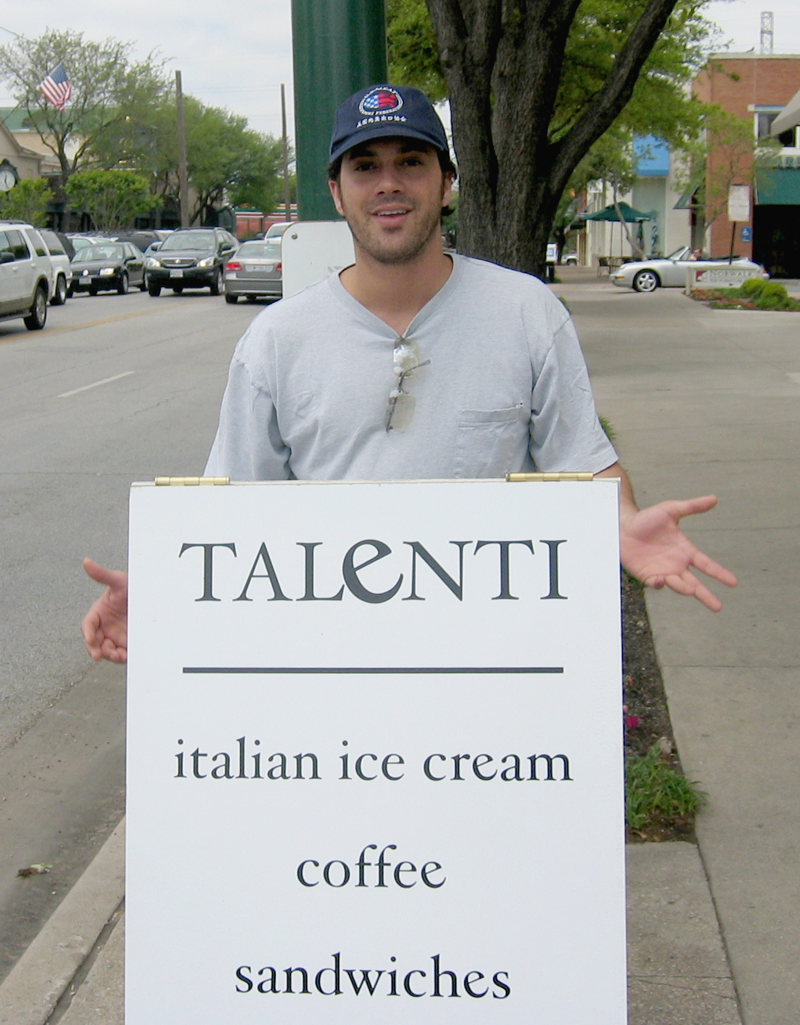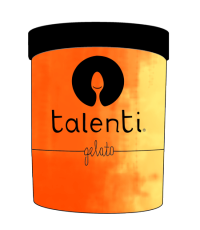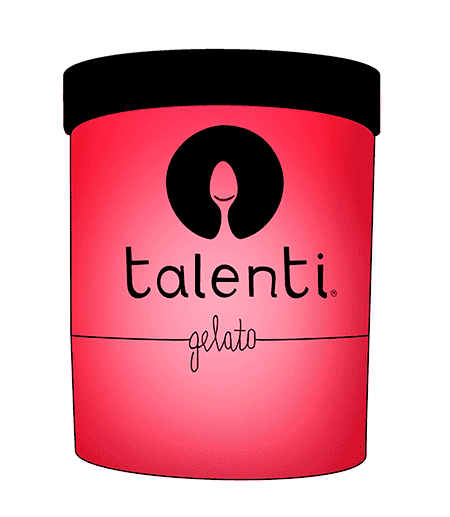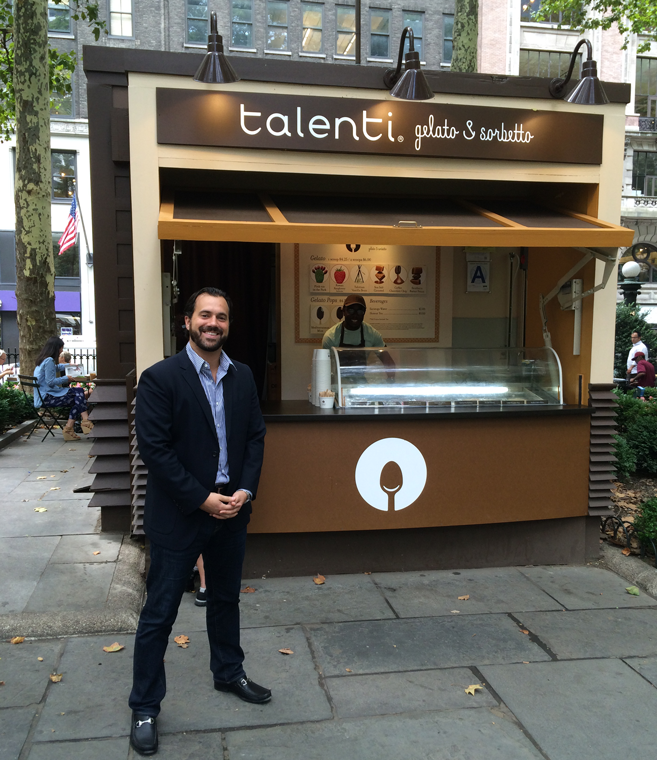Talenti Gelato: A Recipe for Success
How Questrom alum Josh Hochschuler churned up hit gelato company Talenti
Not long after Josh Hochschuler graduated from BU, he moved to Argentina and fell in love—with the culture, the food and wine, rich with Italian influences, and especially with the gelato. It wasn’t just the inventive flavors and the smooth, creamy texture. He was also enamored with the central role that Buenos Aires gelaterías played in city life: they were hubs where people gathered to eat, drink coffee, and socialize.
 Years later, Hochschuler (Questrom’95) turned that passion into Talenti, a gelato company that was snapped up by Unilever in 2014 and today has annual sales of $250 million. Walk through your local grocery store’s ice cream aisle, and you’ll likely notice the distinctive clear plastic pints showcasing an assortment of flavors, from creamy swirled Caramel Cookie Crunch gelato to tart and bold Roman Raspberry sorbet. Now, Hochschuler has launched a new company—Solero, a line of frozen fruit bars—and the product has been rolling out in stores around the country.
Years later, Hochschuler (Questrom’95) turned that passion into Talenti, a gelato company that was snapped up by Unilever in 2014 and today has annual sales of $250 million. Walk through your local grocery store’s ice cream aisle, and you’ll likely notice the distinctive clear plastic pints showcasing an assortment of flavors, from creamy swirled Caramel Cookie Crunch gelato to tart and bold Roman Raspberry sorbet. Now, Hochschuler has launched a new company—Solero, a line of frozen fruit bars—and the product has been rolling out in stores around the country.
He marvels at the evolution of his once-small gelato operation. “Having finished with just $1.7 million at the end of 2007,” he says, “it was a pretty crazy run.”
Hochschuler lived in Argentina for about five years, working in a bank, learning Spanish, and traveling throughout Latin America. In 2001, the Texas native returned to the United States and settled in Dallas, mulling his next steps. The city seemed like a good place to launch a business, and he’d saved some money while working in Argentina. “My heart was still so torn between the States and Argentina—I had such a love for the country,” he says. “I was determined to figure out a way to do something that would involve Argentina in my day-to-day life.” His answer: open a chain of gelato retail stores.
Having no prior experience with food or cooking, or even running a store, he hopped on a plane back to Buenos Aires and arranged a visit with the owner of his favorite gelatería chain there. The owner was in the midst of passing down the family-run business to his son, and he agreed to teach Hochschuler his ways and then partner with him on the new US venture.
Talenti—named after the inventor of gelato, Bernardo Buontalenti—was born.

Hochschuler apprenticed with the owner for a few months, learning the craft of making high-quality gelato and the ins and outs of running a retail store. The gelato was made using an old-world process, which Hochschuler believes is why it’s so uniquely creamy.
“His factory was meticulous and one of a kind. He used very small batch artisan equipment that could make only small quantities at a time, a highly labor-intensive operation. So, in order to scale, he had rows and rows of these machines to keep up with demand,” Hoschschuler says. “Many of the machines were so old that any parts that broke needed to be machined from scratch because they had stopped making that equipment decades ago.”
Gelato has less air and butterfat and more solids than ice cream, and the key to making high-quality gelato, he says, is simple: use high-quality ingredients. “You get what you put in.” Upon launching Talenti, “I spent a tremendous amount of time vetting ingredients to find the right ones. We’d bring in fruits, nuts, and chocolates from all over the world.”
Second is the unique process he learned to make the gelato—a slow cooking that allows flavors to marinate, along with an aging step (chilling the gelato base for a good period of time before churning). “This was a forgotten art,” he says, “one lost along the journey from artisan chefs to volume, margin-focused manufacturing. Our process was not efficient, and as the name suggests, slow. When Unilever bought the business, in many ways I needed to teach them a process that they had used 100 years earlier, but had forgotten how to do.”
When he returned to the United States with his business partner, Hochschuler got to work on a business plan. “I went to 108 potential investors,” he says. “I got 89 nos, and 19 yeses.” In 2003, they opened the gelatería in Dallas.
“When we opened the storefront, it was the talk of the town,” he says. “People loved it.” He came up with flavors by looking to classic Argentine, Italian, and American flavors and putting twists on them. “I would see what chefs were coming up with in any dessert category: cakes, pies, donuts, candy, etc., and translate those into a gelato. I’d follow flavor trends, but also try to initiate some, which was risky. The most successful flavor trend we were largely responsible for starting was salty caramel. That was a huge success for us.”



But while the product was successful, the store’s business model—borrowed from the Argentinian gelaterías—was not. “We had based a lot of the model on being able to sell large quantities that people would take home, like they did in Argentina,” says Hochschuler. “So, even though the margins per cone were good, it wasn’t generating enough dollars to offset all the costs. By 2004, I told my partner that something had to change. I decided to close this beautiful store that had a lot of my own ego, love, passion, and blood, sweat, and tears involved in it. I had to let go of all that.”
Hochschuler realized that if he wanted to sell in quantity, he’d have to look to foodservice—selling to chefs and restaurants—and put the product in supermarkets. “I suggested that to my partner, and he thought it was just horrific, because in Argentina, grocery store ice cream is considered very low end,” he says. “So that’s where we parted ways. I came up with a payment plan over the next couple of years to buy his share out.”
Even before he closed up shop, local chefs had been inquiring about adding his gelato to their menus, and in 2004, he met with some of them.
“So, I was like, okay that’s what I am going to do now,” he says. He secured a 2,500-square-foot warehouse and handled the new operation with one employee. They made the gelato and the deliveries. The business grew, weathered a few bumps, and in 2007 got a boost when major accounts like Whole Foods and Sprouts started to pick up the brand in certain states. Sales reached $1.7 million that year.
With Talenti growing rapidly, Hochschuler realized he needed help from someone with experience managing a large business. He began pitching to executives at companies he admired, partnering with Belvedere Vodka founders Steve Gill and Eddie Phillips. “What they were doing—disrupting the category, coming up with unique packaging, creating an elevated product—was what I was trying to do,” he says.
A year later, Hochschuler and Gill (Phillips had died shortly after the partnership was formed) landed an account that proved a major turning point for the company. With less than 24 hours’ notice, Florida-based Publix Super Markets, with stores across the Southeast, asked them to give a pitch at its headquarters. Publix liked what they heard and agreed to sell the gelato in more than 1,000 stores.

Eventually, Talenti grew to more than 250 employees, and in 2013, Unilever reached out. On December 2, 2014, a buyout was finalized.
As part of the deal, Hochschuler and Gill were in charge of running the company through 2016. Now they have turned their focus to Solero, their line of frozen crushed fruit bars. (Unilever has first rights to get involved with the new company if it decides to.)
Hochschuler still has a hand in Talenti, working as a consultant, with some research and development, media relations, and brand development responsibilities.
From apprenticing at the Buenos Aires factory to helming a multimillion-dollar gelato company, Hochschuler has learned that success is really all about what’s in the containers. “We had unique packaging that helped us gain trial, we had a scrappy, guerilla-style marketing approach, and we had a great sales team. But at the end of the day, consumers loved the gelato,” he says. “There have been many gelato companies in supermarkets before and after our entry, but none that were able to capture as significant a percentage of the marketplace. We were truly blessed.”
It wasn’t easy figuring out how to maintain the quality and integrity of the slow-cooked gelato-making process while venturing into wholesale. When he was running the company, Hochschuler says, “the life cycle of Talenti was one where demand always outpaced supply. Figuring out how to scale a very old-world process was a huge challenge filled with trial and error.” He did eventually figure out proprietary methods for making high-quality gelato in quantity, drawing on his apprenticeship experiences, something, he says, “that I worked hard on together with Unilever as well. One of the first things Unilever did was to legally protect many of the processes that we had come up with—they were that unique.”
Talenti itself was built on trial and error, and over that process Hochschuler has learned that launching a business is not for the faint of heart. “You have to persevere and be ready to ride a roller coaster of ups and downs,” he says. “If you can’t get comfortable with a lot of change, then you probably shouldn’t embark on starting a business. Because it’s going to be so much change—change just becomes the norm.
“But, if you can keep your eyes open, you’ll find opportunity. I believe it’s out there.”

Comments & Discussion
Boston University moderates comments to facilitate an informed, substantive, civil conversation. Abusive, profane, self-promotional, misleading, incoherent or off-topic comments will be rejected. Moderators are staffed during regular business hours (EST) and can only accept comments written in English. Statistics or facts must include a citation or a link to the citation.